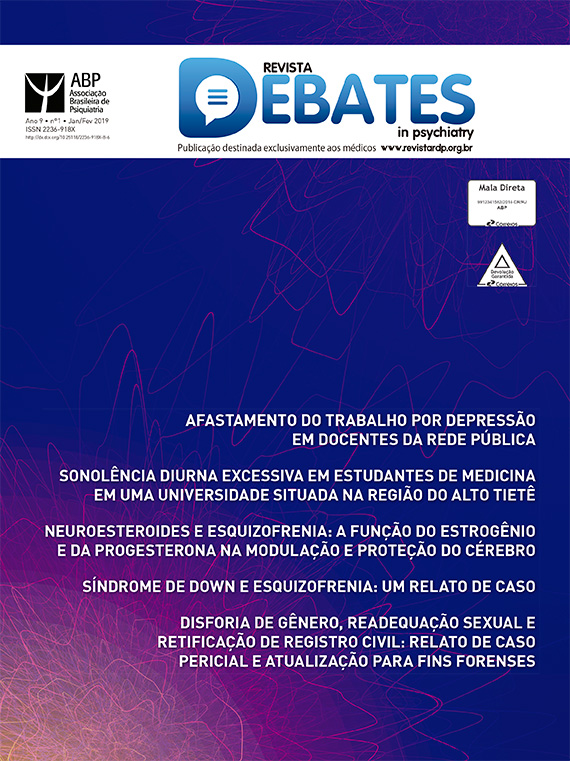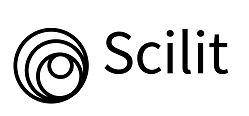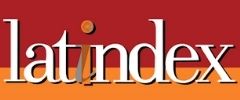Excessive daytime sleepiness in medical studens from a university located in the alto tietê region
DOI:
https://doi.org/10.25118/2763-9037.2019.v9.331Keywords:
Somnolence, quality of life, medical studentsAbstract
Introduction: The academic routine of medical students can interfere with their sleep-wake cycle and contribute to the development of excessive daytime sleepiness (EDS). This condition impairs the individual’s quality of life and reasoning capacity, in addition to causing fatigue and risk of accidents. This fact points to the importance of expanding studies on the topic and investigating its prevalence among medical students, which often have an overload of activities. Objective: To assess the frequency of EDS among undergraduate medical students, as well as to identify the chance of occurrence of EDS symptoms at different stages of the graduation course. Method: The Fletcher and Luckett Questionnaire for the assessment of sleep disorders was applied to students attending years 1 to 4 at a private medical school. The study was cross-sectional and quantitative, and the data collected were analyzed using the R software version 3.5.1 (R Core Team, 2018). Results: The prevalence of at least mild symptoms (score >1) was observed in 44% of the students, and 6% had a daily score close to 2, corresponding to a moderate degree of severity, showing signs of EDS, especially among women, who showed intensified symptoms.Conclusion: The overload of acti viti es throughout the medical curriculum may signifi cantly aff ect the students’ sleep-wake cycle, resulti ng in the onset of EDS symptoms that, once identi fi ed, should be followed by acti ons to prevent them and to warn students about their risks.
Downloads
Metrics
References
Ribeiro CRF, Silva YMG, Oliveira SMC de. O impacto da qualidade do sono na formação médica. Rev Soc Bras Clin Med. 2014;12:8-14.
Bitt encourt LRA, Silva RS, Santos RF, Pires MLN, Mello MT de. Sonolência excessiva . Rev Bras Psiquiatr. 2005;27:16-21.
Quintana AM, Rodrigues AT, Arpini DM, Bassi LA, Cecim P da S, Santos MS. A angústi a na formação do estudante de medicina. Rev Bras Educ Med. 2008;32:7-14.
Furlani R, Ceolim MF. Padrões de sono de estudantes ingressantes na graduação em enfermagem. Rev Bras Enferm. 2005;58:320-4.
Grady F, Roberts LW. Sleep deprived and overwhelmed: sleep behaviors of medical students in the USA. Acad Psychiatry. 2017;41:661-3.
Giorelli AS, Santos PP, Carnaval T, Gomes MM. Sonolência excessiva diurna: aspectos clínicos, diagnósti cos e terapêuti cos. Rev Bras Neurol. 2012;48:17-24.
Lopes JM, Dantas FG, Medeiros JLA. Sonolência diurna excessiva em idosos: associação com risco de disfunção cardiovascular, depressão e obesidade. Rev Bras Epidemiol. 2013;16:872-9.
Alóe F, Azevedo AP, Hasan R. [Sleep-wake cycle mechanisms]. Braz J Psychiatry. 2005;27:33-9.
Berson DM. Strange vision: ganglion cells as circadian photoreceptors. Trends Neurosci. 2003;26:314-20.
Gomes MM, Quinhones MS, Engelhardt E. Neurofi siologia do sono e aspectos farmacoterapêuti cos dos seus transtornos. Rev Bras Neurol. 2010;46:5-15.
Purim KS, Guimarães AT, Titski AC, Leite N. Sleep deprivati on and drowsiness of medicalresidents and medical students . Rev Col Bras Cir. 2016;43:438-44.
Bardini R, Pereira TF, Sakae TM, Remor KVT. Prevalência de sonolência excessiva diurna e fatores associados em adolescentes universitários do sul catarinense. Arq Catarinenses Med. 2017;46:107-24.
Finger G, Silva ER, Falavigna A. Use of methylphenidate among medical students: a systemati c review. Rev Assoc Med Bras (1992). 2013;59:285-9.
Silveira VI, Oliveira RJF, Caixeta MR, Andrade BBP, Costa RGL, Santos GB. Uso de psicoesti mulantes por acadêmicos de medicina de uma universidade do sul de Minas Gerais. Rev Univ Vale Rio Verde. 2015;13:186-92.
Rodrigues RN, Viegas CA, Abreu E Silva AA, Tavares P. Dayti me sleepiness and academic performance in medical students. Arq Neuropsiquiatr. 2002;60:6-11.
Medeiros ALD, Mendes DBF, Lima PF, Araujo JF. The relati onships between sleep-wake cycle and academic performance in medical students. Biol Rhythm Res. 2001;32:263-70.
Pérez-Olmos I, Ibáñez-Pinilla M. Night shift s, sleep deprivati on, and att enti on performance in medical students. Int J Med Educ. 2014;5:56-62.
Bampi LNS, Baraldi S, Guilhem D, Araújo MP, Campos ACO. Qualidade de vida de estudantes de medicina da Universidade de Brasília. Rev Bras Educ Med. 2013;37:217-25.
Gaspar S, Moreno C, Menna-Barreto L. Os plantões médicos, o sono e a ritmicidade biológica. Rev Assoc Med Bras. 1998;44:239-45.
Fletcher EC, Luckett RA. The eff ect of positi ve reinforcement on hourly compliance in nasal conti nuous positi ve airway pressure users with obstructi ve sleep apnea. Am Rev Respir Dis. 1991;143:936-41.
Mariott o LGS, Caetano KAS, Vidal CL, Reis AC. Efeito da práti ca de instrumentos musicais nas disfunções temporomandibulares e distúrbios do sono. Clin Lab Res Dent. 2015;21:220-6.
Pizzatt o R, Lin K, Watanabe N, Campiolo G, Bicalho MA, Guarnieri R, et al. Excessive sleepiness andsleep patterns in patients with epilepsy: a casecontrol study. Epilepsy Behav. 2013;29:63-6.
Cunali PA, Almeida FR, Santos CD, Valdrichi NY, Nascimento LS, Dal-Fabbro C, et al. Mandibular exercises improve mandibular advancement device therapy for obstructive sleep apnea. Sleep Breath. 2011;15:717-27.
Cardoso HC, Bueno FCC, Mata JC, Alves APR, Jochims I, Vaz Filho IHR, et al. Avaliação da qualidade do sono em estudantes de medicina. Rev Bras Educ Med. 2009;33:349-55.
Souza JC, Magna LA, Aiache S, Magna NS. Sonolência excessiva diurna na população geral de um município brasileiro. J Bras Psiquiatr. 2008;57:34-7.
Azad MC, Fraser K, Rumana N, Abdullah AF, Shahana N, Hanly PJ, et al. Sleep disturbances among medical students: a global perspective. J Clin Sleep Med. 2015;11:69-74.
Pereira ECA, Schmitt ACB, Cardoso MRA, Pereira WMP, Lorenzi-Filho G, Blumel JE, et al. Prevalência da sonolência diurna excessiva e fatores associados em mulheres de 35 a 49 anos de idade do “Projeto de Saúde de Pindamonhangaba” (PROSAPIN). Rev Assoc Med Bras. 2012;58:447-52.
Araújo MFM de, Lima ACS, Alencar AMPG, Araújo TM de, Fragoaso LVC, Damasceno MMC. Avaliação da qualidade do sono de estudantes universitários de Fortaleza-CE. Texto Context Enferm. 2013;22:352-60.
Souza JC. Sonolência diurna excessiva em trabalhadores da área de enfermagem. J Bras Psiquiatr. 2007;56:180-3.
Pereira EF, Teixeira CS, Louzada FM. Sonolência diurna excessiva em adolescentes: prevalência e fatores associados. Rev Paul Pediatr. 2010;28:98-103.
Downloads
Published
How to Cite
Issue
Section
License

This work is licensed under a Creative Commons Attribution-NonCommercial 4.0 International License.
Debates em Psiquiatria allows the author (s) to keep their copyrights unrestricted. Allows the author (s) to retain their publication rights without restriction. Authors should ensure that the article is an original work without fabrication, fraud or plagiarism; does not infringe any copyright or right of ownership of any third party. Authors should also ensure that each one complies with the authorship requirements as recommended by the ICMJE and understand that if the article or part of it is flawed or fraudulent, each author shares responsibility.
Attribution-NonCommercial 4.0 International (CC BY-NC 4.0) - Debates em Psiquiatria is governed by the licencse CC-By-NC
You are free to:
- Share — copy and redistribute the material in any medium or format
- Adapt — remix, transform, and build upon the material
The licensor cannot revoke these freedoms as long as you follow the license terms. Under the following terms:
- Attribution — You must give appropriate credit, provide a link to the license, and indicate if changes were made. You may do so in any reasonable manner, but not in any way that suggests the licensor endorses you or your use.
- NonCommercial — You may not use the material for commercial purposes.
No additional restrictions — You may not apply legal terms or technological measures that legally restrict others from doing anything the license permits.






























